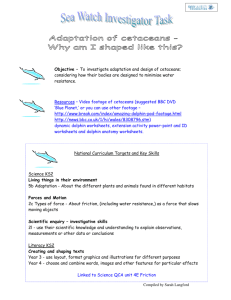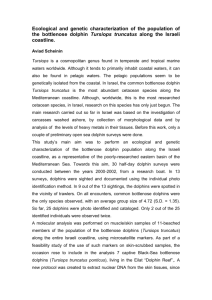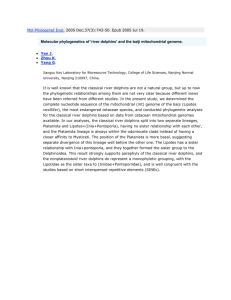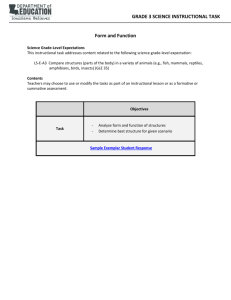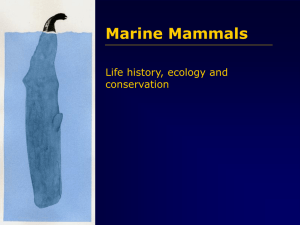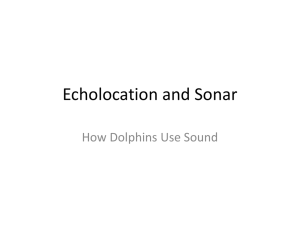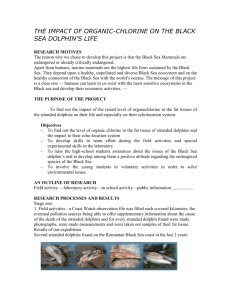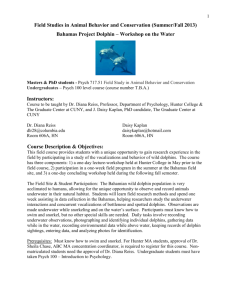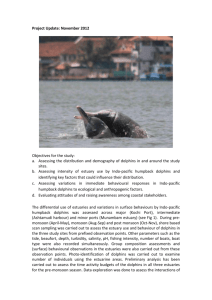Years 5&6 Slide 1 Introduce us Slide 2 Play slide Slide 3 A Dolphin
advertisement
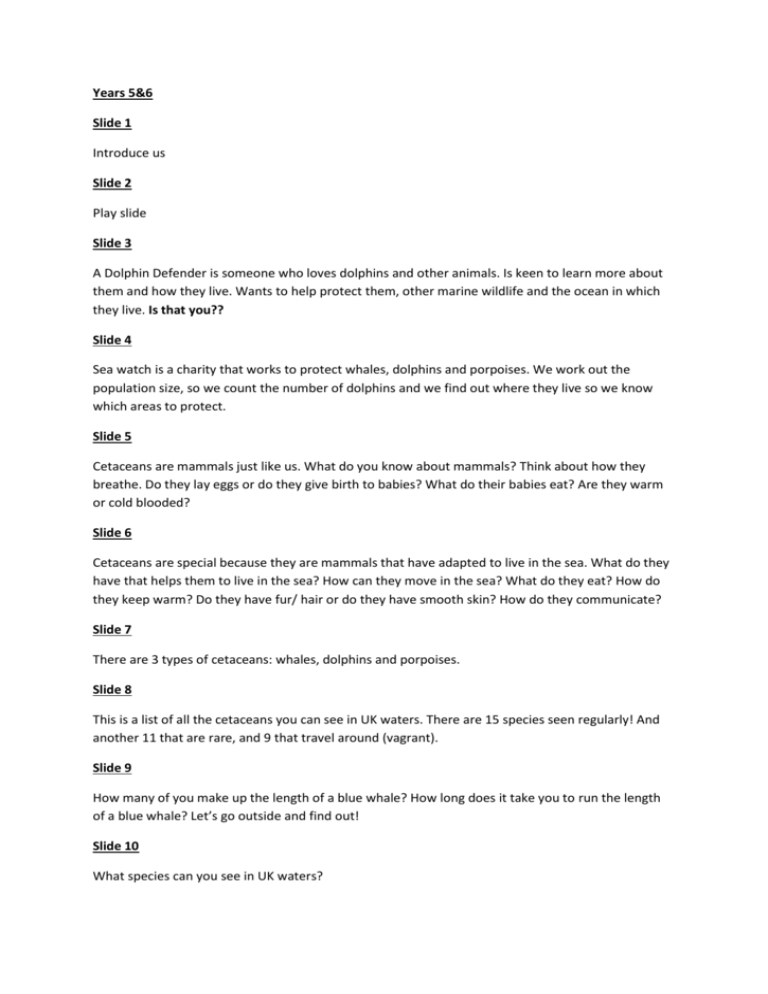
Years 5&6 Slide 1 Introduce us Slide 2 Play slide Slide 3 A Dolphin Defender is someone who loves dolphins and other animals. Is keen to learn more about them and how they live. Wants to help protect them, other marine wildlife and the ocean in which they live. Is that you?? Slide 4 Sea watch is a charity that works to protect whales, dolphins and porpoises. We work out the population size, so we count the number of dolphins and we find out where they live so we know which areas to protect. Slide 5 Cetaceans are mammals just like us. What do you know about mammals? Think about how they breathe. Do they lay eggs or do they give birth to babies? What do their babies eat? Are they warm or cold blooded? Slide 6 Cetaceans are special because they are mammals that have adapted to live in the sea. What do they have that helps them to live in the sea? How can they move in the sea? What do they eat? How do they keep warm? Do they have fur/ hair or do they have smooth skin? How do they communicate? Slide 7 There are 3 types of cetaceans: whales, dolphins and porpoises. Slide 8 This is a list of all the cetaceans you can see in UK waters. There are 15 species seen regularly! And another 11 that are rare, and 9 that travel around (vagrant). Slide 9 How many of you make up the length of a blue whale? How long does it take you to run the length of a blue whale? Let’s go outside and find out! Slide 10 What species can you see in UK waters? Slide 11 Harbour porpoise Slide 12 Bottlenose dolphin Slide 13 Common dolphin Slide 14 Risso’s dolphin Slide 15 Minke whale Slide 16 Do you know how whales and dolphins talk to each other? They don’t speak using our words but they use their own sounds which they understand. They use these sounds to find their friends but also to find fish to eat. different species make different sounds. Slide 17 Let’s listen to some of their sounds. Listen carefully and then you can try to copy them. This is a humpback whale (refer to finding nemo). This is another humpback whale. Why don’t you try to copy it? This is a right whale, it makes a sound like a trumpet. Can you copy that sound? And lastly this is a sperm whale which makes a clicking sound, try it now. So now I am going to split you into 3 groups and each group is going to be one of the whales and we will have a competition to see who is the loudest whale. A big problem for whales and dolphins is all the noise that we make in the sea. Boats are very loud and can make it difficult for the whales and dolphins to hear. Try making boat sounds and see if you can hear this bottlenose dolphin clicking and whilstling. Imagine what it must be like for them in the sea, we need to try to reduce noise levels in areas where whales and dolphins live. Slide 18 Cardigan Bay is one of the largest bays in Uk containg the least polluted and lead exploited waters in Wales. It is also relatively shallow so a good environment to raise young. Slide 19 – 25 introduce Slide 26 So can anyone remember the difference between these 2 species. Size? Dorsal fin? Beak? Slide 27 We see the harbour porpoise widely distributed around the Irish sea which is the sea next to Wales. The and yured patches are where they are most common and you can see it is mostly around the headlands but they are everywhere. However bottlenose dolphins are mainly coastal, and seem to be mostly in cardigan bay and up past anglesy. Slide 28 So why don’t we see porpoises and dolphins together? Why do you think? We have seen bottlenose dolphins attach harbour porpoises as we can see in these photos. You can see how much bigger a dolphin is! This may be because they know they are competing for food but might be them practicing infanticide. Male dolphins will kill other males’ babies so that his have the best chance and they may practice with porpoises as they are the same size. So this dolphin is called vodlermort. Slide 29 Grey seal Slide 30 Around Britain, they are mainly found around exposed rocky coasts in the western and northern regions. 2 types seal around Britain, common and grey. Only grey found in CBay Male seal is dark with light spots and female is light with dark spots. She also has a much slender nose, a prettier face! Slide 31 – 34 Pictures of seals Side 35 Other species you can see around Wales, risso’s dolphin on the top left, common dolphins on the top right and minke whale on bttom. Slide 36 SO what threats do you think might affect cetaceans? Illness because of pollution and rubbish. Competition over fish with humans. Capture and drowning in fishing nets. Becoming stranded on beaches because of noisy Navel ships that use onar, or drilling. Being injured by boat propellers. hunting. Slide 37 Play slide Slide 38 Over its lifetime, a bottlenose dolphin will develop markings on its fins and body through playing or scuffles with other pod members, and from scratching itself against rocks or the seabed. They can be bite marks or sometimes propeller cuts if they get too close to boats. For eaxample on this dolphin called moneypenny. The Sea Watch scientists take photos of bottlenose dolphins’ fins and use these distinctive markings and scratches to track them over the years – a little like using fingerprints to ID humans! Slide 39 Photo ID is a way of keeping a record of the movements of animals, and allows us to learn more about them, for example how far they roam, if the females have had calves, if they are healthy and how many there are. Slide 40 So to finish off, what can you do to help? Can you think of anything? You can report your sightings. Let us know any species that you see when you are out and about. All you need to do is tell us what species it was, how many there were, what they were doing and where they were. We need to reduce the amount of rubbish in the sea, so make sure you don’t litter! If you do see any rubbish on the beach, pick it up and put it in the bin, you might be saving an animals life! And you can adopt one of the dolphins that live in cardigan bay, the money will go towards conserving them. Slide 41 Play slide. Slide 42 Congratulations you are now a dolphin defender! Thanks for listening. Any questions.


